Scottish flood protection strategy launched
- Published
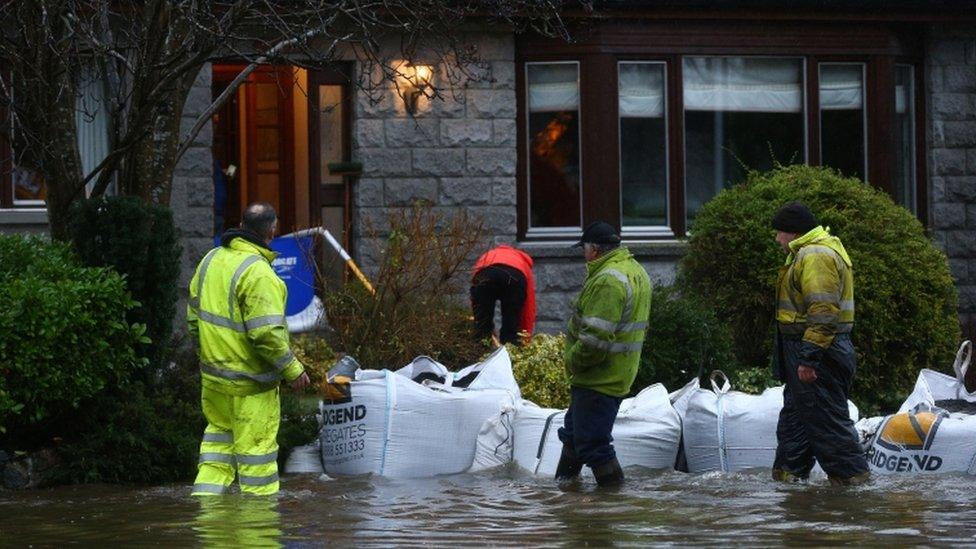
Aboyne in Aberdeenshire is among the places worst affected by flooding in recent weeks
The Scottish government has formally launched what it has described as the country's first national flood risk management plan.
The plan comprises 14 separate local strategies that were first published by Sepa in December, external.
The strategies identify a total of 42 flood protection schemes that have been proposed for action over the next five years at a total cost of £235m.
Ministers said the plan would help protect up to 10,000 properties.
It details plans to carry out modelling, new prevention schemes, maintenance on existing works and raising flood awareness.
Hundreds of people were evacuated from their homes in Aberdeenshire after the Rivers Dee, Don and Ythan burst their banks in the early hours of Friday.
And flooding hit Tayside and the Borders in the wake of Storm Frank last month.
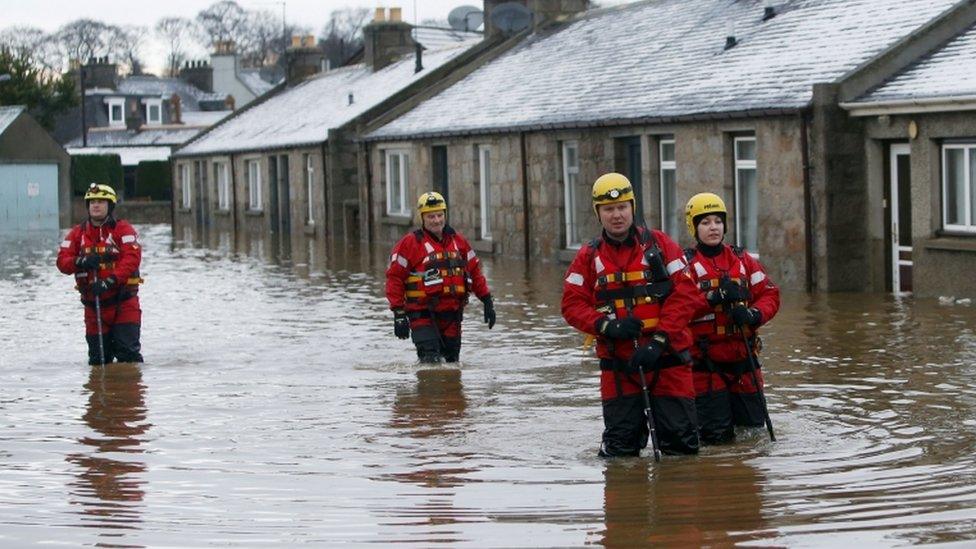
Port Elphinstone in Aberdeenshire was badly flooded
Scottish Labour had been calling for a review of the country's preparedness to deal with flooding in future.
Environment Minister Aileen McLeod said the national flooding plan was an important and necessary step towards reducing the possibility of similar damage being caused by flooding in the future.
She told the BBC's Good Morning Scotland programme that the plan was the culmination of six years' work by Sepa, local authorities, Scottish Water and other organisations.
She added: "It will help us to target investment and co-ordinate actions across our public bodies and our partnership agencies to tackle flooding."
Dozens of homes were evacuated after the River Don burst its banks
It follows a £12m investment - £9m of which will come from Barnett consequentials - announced by the first minister at the weekend which will see grants of £1,500 offered to people affected by flooding.
The money will be paid through local authorities who will need to meet the costs of the grants from their own funds before claiming it back from the Scottish government in March.
Sepa has said that December had been the wettest on record, with 50 of its gauging stations recording their highest ever levels.
The agency's director, Terry A'Hearn, said the flooding strategy aimed to co-ordinate the efforts of organisations that tackle flooding and concentrate this work to where the risk of flooding and the benefits of investment were greatest.
He added: "Through this risk-based and plan-led approach, the strategies aim to improve flood management for individuals, communities and businesses at risk in Scotland."
Bellwin Scheme
Funding for local authorities is also to be made available under the Bellwin Scheme, external, a system that supports councils in the event of large-scale emergencies.
However, Scottish Liberal Democrat leader Willie Rennie hit out at the Scottish government for "hyping" the support available, saying councils had not received funding in previous cases.
The government cited the scheme following flooding in Comrie in 2012 and in Alyth in 2015, but Mr Rennie said Perth and Kinross Council had never received any funds.
He said: "When the Scottish government makes apparently generous announcements about triggering the Bellwin scheme they are giving the impression that financial support for communities is almost automatic, but that's far from the truth.
"The strict criteria that needs to be met means communities in Comrie and Alyth in Perthshire did not automatically and speedily receive support after major floods in recent years. Both are still waiting. The SNP government needs to go beyond the Bellwin scheme to provide urgent help."
- Published11 January 2016
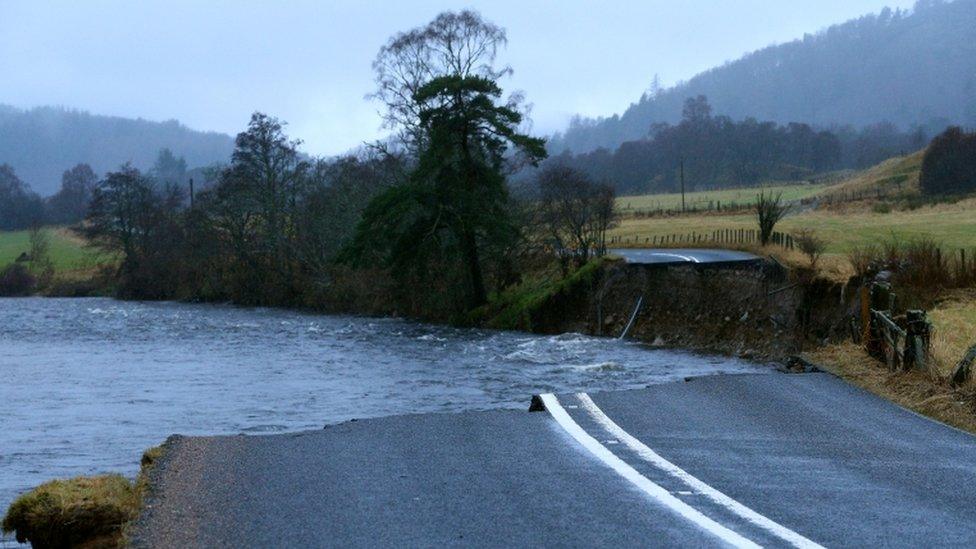
- Published8 January 2016
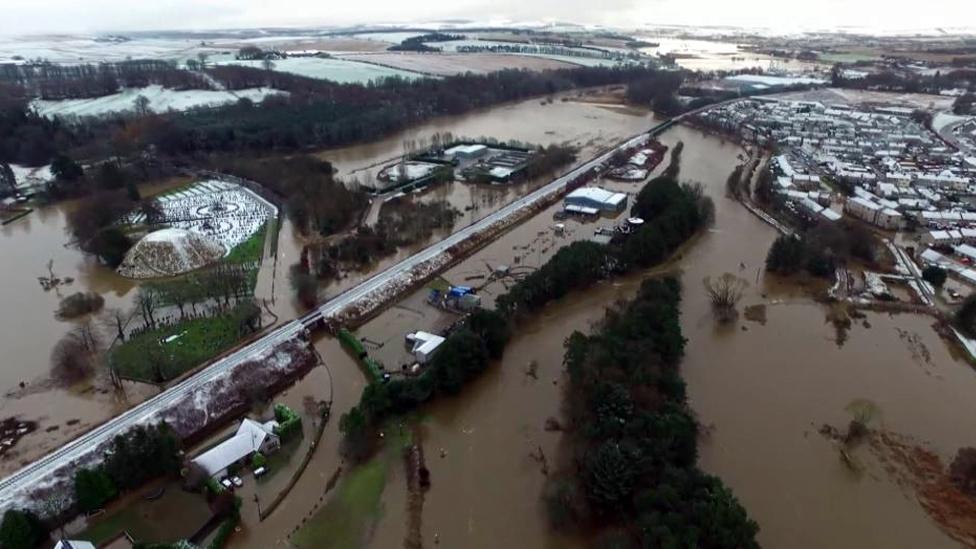
- Published8 January 2016
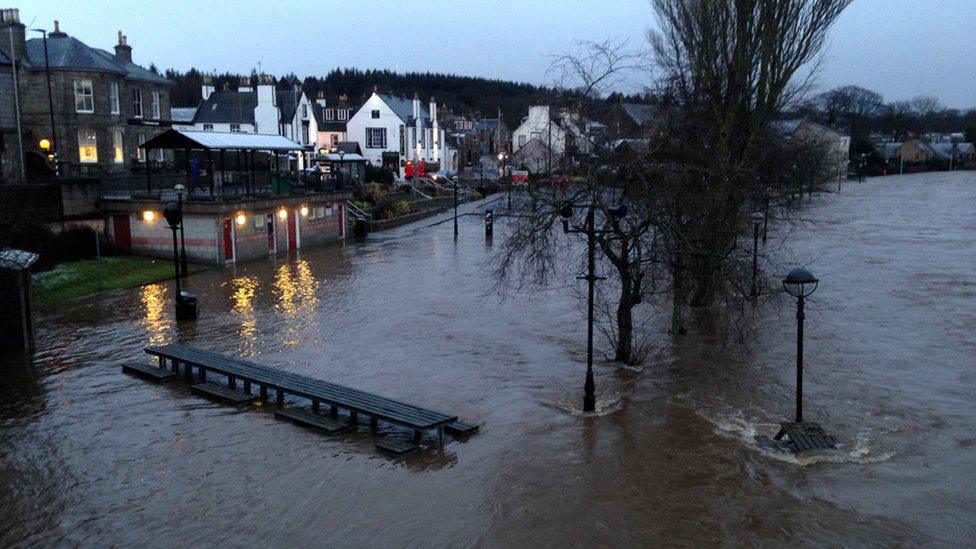
- Published7 January 2016
